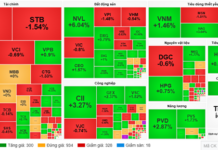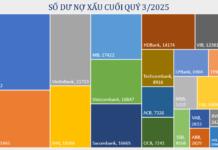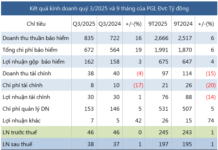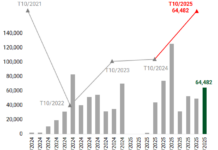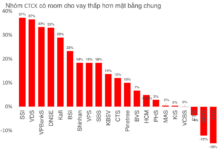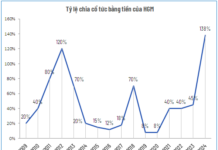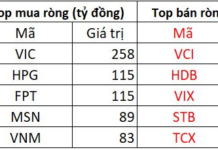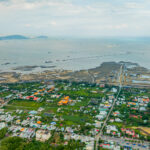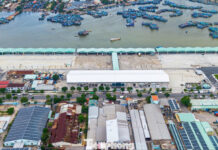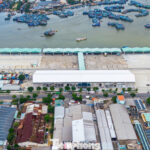Located approximately 50km southeast of Ho Chi Minh City, Can Gio is often referred to as the “green lung” of the region, thanks to its lush vegetation. As the city’s only coastal area, it boasts a unique blend of sea, forest, and diverse ecosystems, soon to be complemented by the world’s largest artificial lake as part of the Vinhomes Green Paradise project.
With these features, Can Gio is increasingly recognized as an ideal destination for eco-tourism and short getaways, attracting both locals and international visitors alike.

Image: VinWonders
Previously, reaching Can Gio required a journey of over an hour by motorbike, private car, or bus, including a ferry ride. However, starting in 2028, a groundbreaking change will reduce this travel time to just 15 minutes.
This transformation is made possible by the Ho Chi Minh City – Can Gio high-speed railway proposed by VinSpeed Railway Investment and Development Joint Stock Company (a subsidiary of Vingroup). The project is expected to revolutionize eco-tourism in the city.
A 50km Journey Like Never Before!
According to Tuoi Tre newspaper, the project is slated to begin construction in late 2025, with a total investment of approximately VND 76 trillion, and is expected to be completed within 30-36 months. The 48km route will have a maximum design speed of 350km/h, featuring two stations: Tan Thuan (former District 7) and Can Gio (Long Hoa Commune).
Once operational, passengers will take only 15-16 minutes to travel from downtown Ho Chi Minh City to Can Gio Beach—faster than the commute to Tan Son Nhat Airport during peak hours.
With a speed of 350 km/h, the 8-car train can carry 600-800 passengers per trip, operating 3-4 trips per hour during peak times. VnExpress highlights that the railway is designed to international standards, with a 1,435 mm gauge and advanced high-speed train technology, comparable to many European and Asian routes.
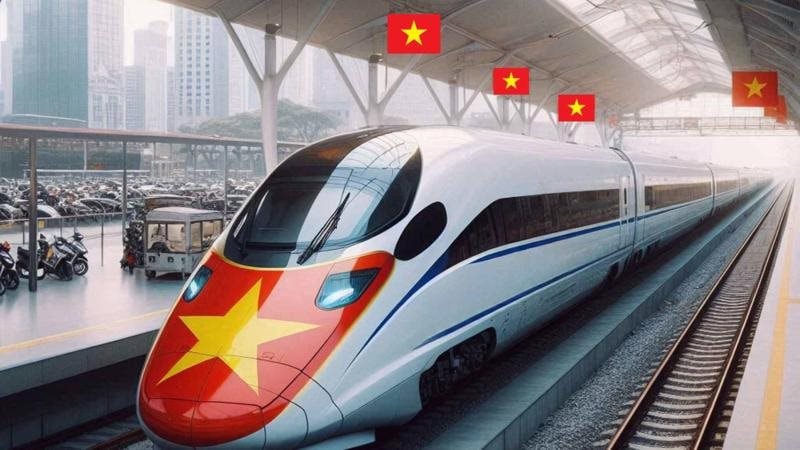
Illustrative image generated by AI
Notably, the entire route will be elevated, crossing the Soai Rap River via a dedicated cable-stayed bridge, ensuring both waterway traffic and the preservation of the mangrove forest—the city’s precious green lung. Traffic congestion will be a thing of the past for travelers.
Experts predict that this railway will significantly enhance Ho Chi Minh City’s transportation infrastructure, as Can Gio has long been considered a connectivity “lowland.” Once operational, it will offer a fast, safe, and affordable travel option, particularly for special groups such as the elderly, people with disabilities, and families with young children, reducing reliance on private cars or long-distance buses.
Tuoi Tre also reports that VinSpeed proposes implementing a Transit-Oriented Development (TOD) model around the two stations. This means that Tan Thuan and Can Gio stations will not only serve as transit hubs but also develop into commercial service areas with parking, hotels, and other amenities, enhancing convenience for visitors.
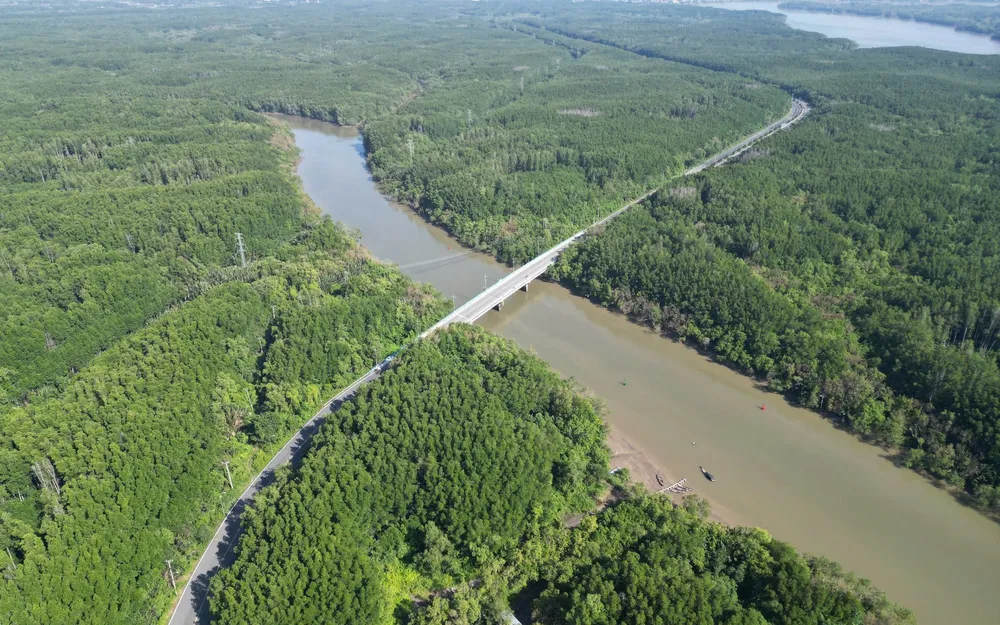
Image: Sai Gon Investment Newspaper
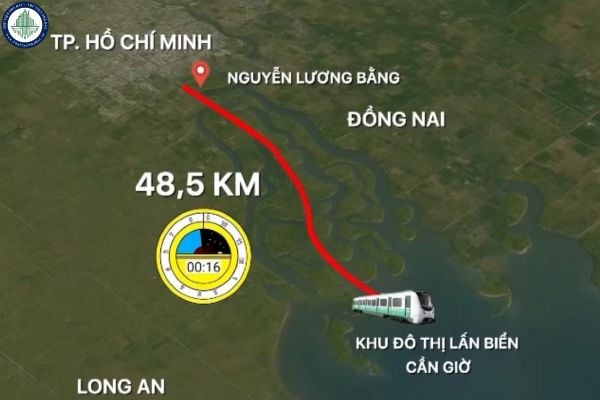
Route Map (Image: Real Estate Library)
According to the timeline, if construction begins as scheduled in late 2025, the project could be completed by 2028, making Can Gio one of the world’s rare coastal destinations accessible by high-speed train directly from a major urban center.
Can Gio – Ho Chi Minh City’s Ecological Paradise
As mentioned earlier, Can Gio is likened to the city’s “green lung,” boasting a mangrove ecosystem spanning over 70,000 hectares, recognized by UNESCO as a World Biosphere Reserve.
Visitors can explore the Sac Forest by canoe, navigating through vast mangroves to spot playful monkeys, crocodiles, and waterbirds. Another must-visit is the Hang Duong Seafood Market, offering a variety of fresh shrimp, crab, squid, snails, and fish at affordable prices. Local beachside eateries are ready to cook your purchases on the spot, providing a rustic and cozy dining experience.
Additionally, Can Gio features Monkey Island, the Vam Sat Eco-Tourism Area, the Ly Nhan Tong Temple, and the 30/4 Beach—an ideal spot for camping and team-building activities. With the high-speed railway, travel agencies can design day trips from the city center, saving time while ensuring a full experience.
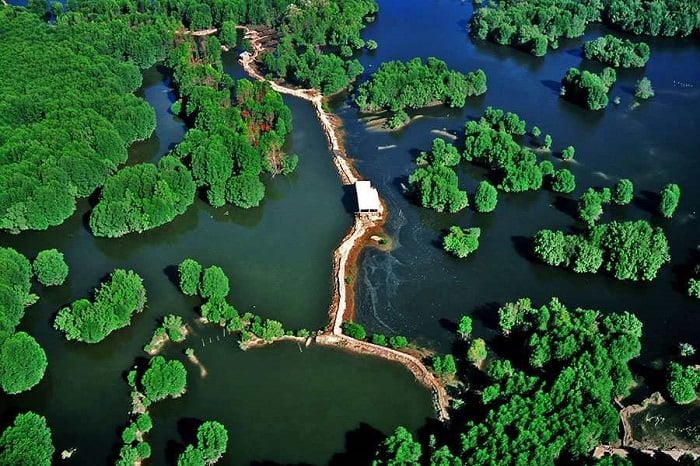

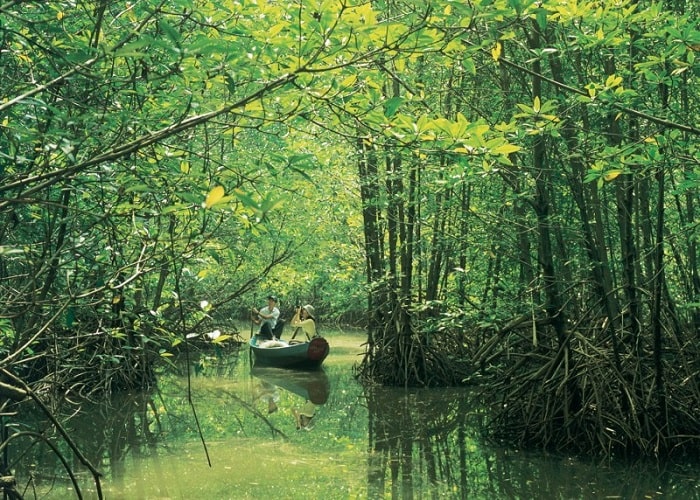
Image: ST
Currently, there is no official information on ticket prices for the Ho Chi Minh City – Can Gio high-speed railway once operational. However, fares are expected to be competitive with taxis or buses, given the high passenger capacity and closed infrastructure.
Why Ho Chi Minh City Proposes Utilizing Underbridge Spaces for Public Purposes
Ho Chi Minh City proposes utilizing underpass spaces for parking lots, sports fields, and other public amenities to meet community needs while ensuring safety, fire prevention, and smooth traffic flow.
Vinhomes Can Gio Mega-Project Attracts Flood of Brokers, Investors; Hotels Fully Booked, Surrounding Land Prices Surge
Spanning nearly 2,900 hectares and backed by a $10 billion investment, Vinhomes Green Paradise Can Gio is not just impressive in scale—it’s a project surging ahead at lightning speed. Hundreds of barges, trucks, and cranes are hard at work, with many areas already taking shape and road construction underway.
Saigon Marina IFC: Pioneering Ho Chi Minh City’s Rise as a Global Financial Hub
As Vietnam aims to establish Ho Chi-Minh City as the region’s financial hub, the demand for world-class infrastructure has become imperative. Saigon Marina IFC emerges as a catalyst to realize this ambition, serving as both a destination for financial institutions and a new architectural landmark for the city.

